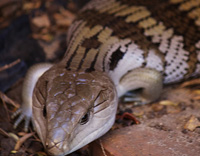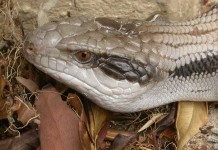Taking care of Blue Tongued Skinks is an easy job to do as far as the adult animal is concerned. With baby Blue Tongues Skinks, you may have exert more caution and give them more time so that they can grow and develop into healthy adult reptiles. One of the primary problems that most people have with the care of juvenile skink reptiles is that it is difficult to predict the day when the female will be giving birth. While it is not crucially important to be around when the female skink is giving birth, you should be mentally and practically prepared to accommodate at least three of four more young reptiles in your house.
 The process of giving birth of the reptiles is fairly simple and uncomplicated. Normally, you will not have to intervene to help the female giving birth or the newborn babies except when one newborn tries to eat the placenta of another newborn. It is very important for each baby to consume its own placenta since the placenta is filled with vitamins and antibodies and is necessary for the blue tongue skink baby to survive.
The process of giving birth of the reptiles is fairly simple and uncomplicated. Normally, you will not have to intervene to help the female giving birth or the newborn babies except when one newborn tries to eat the placenta of another newborn. It is very important for each baby to consume its own placenta since the placenta is filled with vitamins and antibodies and is necessary for the blue tongue skink baby to survive.
Like adult skink reptiles, once the babies are settled in, they will only require a comfortable and well-sized terrarium with proper heating and lighting and regular meals that are full of vitamins and nutrition that will help them grow. However, baby skink reptiles will have to be fed more regularly once or more a day than adult that are fed every other day.
Taking Care of Newborn and Juvenile Skinks
Guide on handling and taking care of the newly born and juvenile blue tongue skink.
Advantages and Disadvantages of Cohabitation
The skinks cohabitation guideline in housing two or more reptiles in an enclosure.
Clipping Nails for Blue Tongue Skink
The proper ways of clipping nails for skinks, and the significance of timely clipping.
Shedding
The shedding process of blue tongue skink reptile in details; precautions and measures to be taken when dealing with skink shedding.












